This article was co-authored by Eric Christensen, DPT and by wikiHow staff writer, Eric McClure. Eric Christensen is a Physical Therapist based in Chandler, Arizona. With over a decade of experience, Eric works in both orthopedic and neurological fields and specializes in custom orthotic prescription and casting, vestibular reprogramming, and manual therapy. He holds a Bachelor’s degree in Exercise Science with a focus in Sports Medicine from Colorado State University and a Doctor of Physical Therapy from Regis University. In practice, Eric takes a developmental approach to rehabilitation utilizing the Selective Functional Movement Assessment. He uses functional movement patterning and manual therapy to return patients to prior levels of function.
There are 14 references cited in this article, which can be found at the bottom of the page.
This article has been viewed 10,536 times.
We all know how easy it is to lean back in that comfy sofa after work or hunch over our smartphone while we ride the bus. But if you’ve ever had a crick in your neck or woken up with a sore back after a long day of lounging around, your posture may be to blame. To fix bad posture, some people go to a posture corrector, which is a fabric back brace that pulls your shoulders back and encourages you to maintain a neutral spine. While these correctors can be a solid reminder to sit up straight, they probably aren’t a long-term solution. Luckily, if you spend a few minutes exercising every day and remind yourself to sit and stand up straight, you can improve your posture without a fancy back brace in as little as 6-12 weeks![1]
Steps
Do doctors recommend posture correctors?
-
1No, most doctors tend to think they do more harm than good. There haven’t been a lot of medical studies on the long-term use of posture correctors since they’re a relatively recent trend.[11] Still, it seems medical professionals aren’t confident that they’re helpful as a long-term solution. Many doctors believe that posture correctors can even be bad for your back in the long run since they keep your muscles from developing in a way that makes it easy to maintain a good posture.[12] [13]
- If you see a doctor and ask them how you can improve your posture, they’re probably going to recommend regular exercise, stretching, and avoiding prolonged periods of sitting. This is a proven formula for success when it comes to fixing bad posture.[14]
-
2Some researchers think a corrector may make you more aware of your posture. If there is any benefit to a posture corrector, it’s probably that they make you pay attention to the way you sit and stand. This can make you more likely to correct yourself, since you’re wearing a device that sits on your shoulders and back.[15] If you use a posture corrector for a few minutes a day and you look at the device as a reminder, there probably isn’t much harm in it.[16] [17]
- To put it another way, you probably aren’t going to hurt anything if you wear the posture corrector for 5-10 minutes every other day or so to remind yourself what proper posture looks like. But if you wear the brace for 6 hours a day, you may end up doing more harm than good as your muscles atrophy.
How long does it take to fix bad posture?
-
1It depends, but you can usually improve your posture in 6-12 weeks.[18] In order to have good posture, you need to strengthen your core, back, and shoulders.[19] However, the amount of time that it takes to strengthen these muscles will differ from person to person. If you exercise regularly and you start sitting and standing up straight, you can fix your posture problems in as little as a month or two!
- Just as a reminder, you want your neck to curve forward a little, your upper back to stick back a bit, and your lower back to curve forward. Your spin should look kind of like the letter S. Keep your chin up and keep your spine perfectly vertical whenever you can.[20]
- Planks, bridges, pull-ups, and back extensions are all great callisthenic exercises if you’re looking to strengthen the muscles you rely on for proper posture.[21]
- Stretching or doing yoga for a few minutes every day will dramatically improve your posture.[22]
-
2Changing your habits can really speed this process up. If you spend most of your day hunched over a computer screen, slouching in a chair, or staring at your phone, it’s going to be really difficult to fix your posture.[23] Try to avoid spending all day seated or lying down. Take frequent breaks, look up when you walk, and don’t stare at your phone while you’re on the bus or getting a ride somewhere.[24]
- If you are forced to sit every day for work, roll a towel up and slide it behind your shoulders. Focus on sitting up straight so that the towel stays pinched against the back of the chair.[25] This is basically the same thing as a posture corrector, except your muscles will get stronger as you improve your posture!
- If you spend a lot of time at the computer, tape a note to your computer screen to sit up straight. This will help remind you to maintain good posture if you tend to get caught up in what you’re doing and slump forward or back while you sit.[26]
References
- ↑ https://www.health.harvard.edu/staying-healthy/is-it-too-late-to-save-your-posture
- ↑ https://pubmed.ncbi.nlm.nih.gov/31075089/
- ↑ https://pubmed.ncbi.nlm.nih.gov/23672321/
- ↑ https://www.washingtonpost.com/lifestyle/wellness/hunching-over-screens-is-ruining-your-back-can-wearable-gadgets-pull-you-out-of-a-slump/2019/09/30/fccb5898-da53-11e9-a688-303693fb4b0b_story.html
- ↑ https://youtu.be/vO5psmLUV7k?t=40
- ↑ Eric Christensen, DPT. Physical Therapist. Expert Interview. 29 April 2021.
- ↑ https://www.ncbi.nlm.nih.gov/pmc/articles/PMC4488203/
- ↑ https://www.washingtonpost.com/lifestyle/wellness/hunching-over-screens-is-ruining-your-back-can-wearable-gadgets-pull-you-out-of-a-slump/2019/09/30/fccb5898-da53-11e9-a688-303693fb4b0b_story.html
- ↑ https://youtu.be/vO5psmLUV7k?t=92
- ↑ https://www.washingtonpost.com/lifestyle/wellness/hunching-over-screens-is-ruining-your-back-can-wearable-gadgets-pull-you-out-of-a-slump/2019/09/30/fccb5898-da53-11e9-a688-303693fb4b0b_story.html
- ↑ https://pubmed.ncbi.nlm.nih.gov/31075089/
- ↑ https://youtu.be/vO5psmLUV7k?t=121
- ↑ Eric Christensen, DPT. Physical Therapist. Expert Interview. 29 April 2021.
- ↑ https://www.health.harvard.edu/pain/posture-and-back-health
- ↑ https://www.ncbi.nlm.nih.gov/pmc/articles/PMC3554027/
- ↑ https://www.washingtonpost.com/lifestyle/wellness/hunching-over-screens-is-ruining-your-back-can-wearable-gadgets-pull-you-out-of-a-slump/2019/09/30/fccb5898-da53-11e9-a688-303693fb4b0b_story.html
- ↑ Eric Christensen, DPT. Physical Therapist. Expert Interview. 29 April 2021.
- ↑ https://www.health.harvard.edu/staying-healthy/is-it-too-late-to-save-your-posture
- ↑ https://www.health.harvard.edu/staying-healthy/is-it-too-late-to-save-your-posture
- ↑ https://www.mayoclinichealthsystem.org/hometown-health/speaking-of-health/better-posture-3-tips-for-standing-up-straight
- ↑ https://www.nhs.uk/live-well/exercise/common-posture-mistakes-and-fixes/
- ↑ https://www.health.harvard.edu/staying-healthy/is-it-too-late-to-save-your-posture
- ↑ https://www.health.harvard.edu/staying-healthy/is-it-too-late-to-save-your-posture
- ↑ https://www.mayoclinichealthsystem.org/hometown-health/speaking-of-health/better-posture-3-tips-for-standing-up-straight
- ↑ https://www.health.harvard.edu/staying-healthy/is-it-too-late-to-save-your-posture
- ↑ https://www.mayoclinichealthsystem.org/hometown-health/speaking-of-health/better-posture-3-tips-for-standing-up-straight
- ↑ https://www.spine-health.com/treatment/alternative-care/when-consider-back-brace


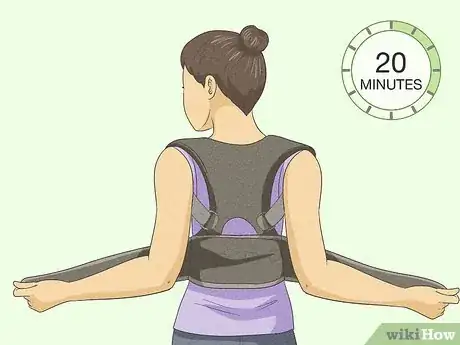
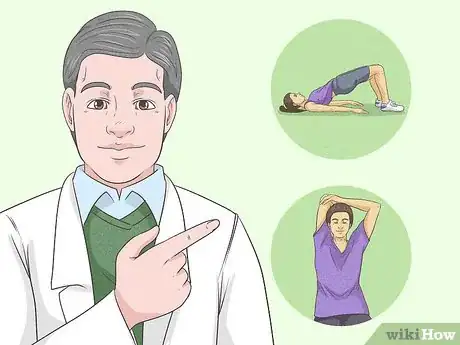
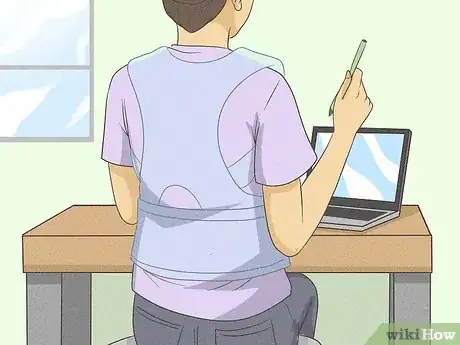

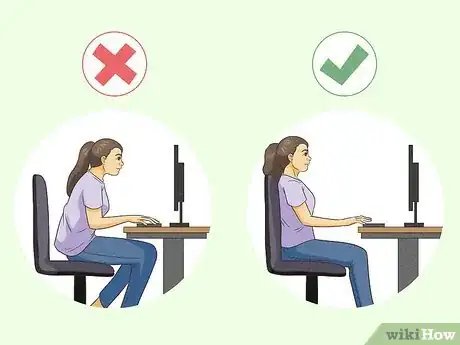
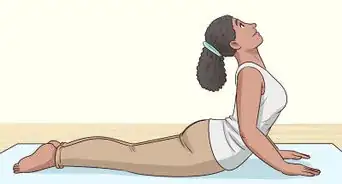


















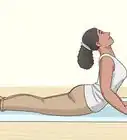






































Medical Disclaimer
The content of this article is not intended to be a substitute for professional medical advice, examination, diagnosis, or treatment. You should always contact your doctor or other qualified healthcare professional before starting, changing, or stopping any kind of health treatment.
Read More...